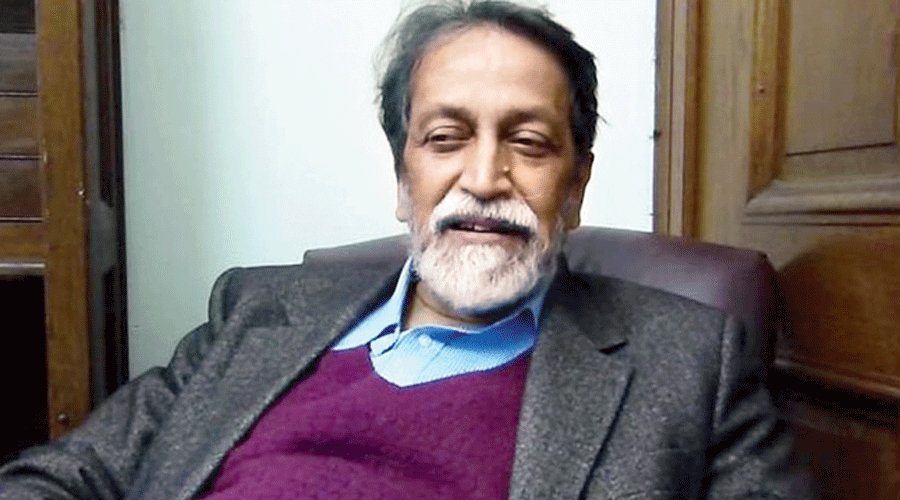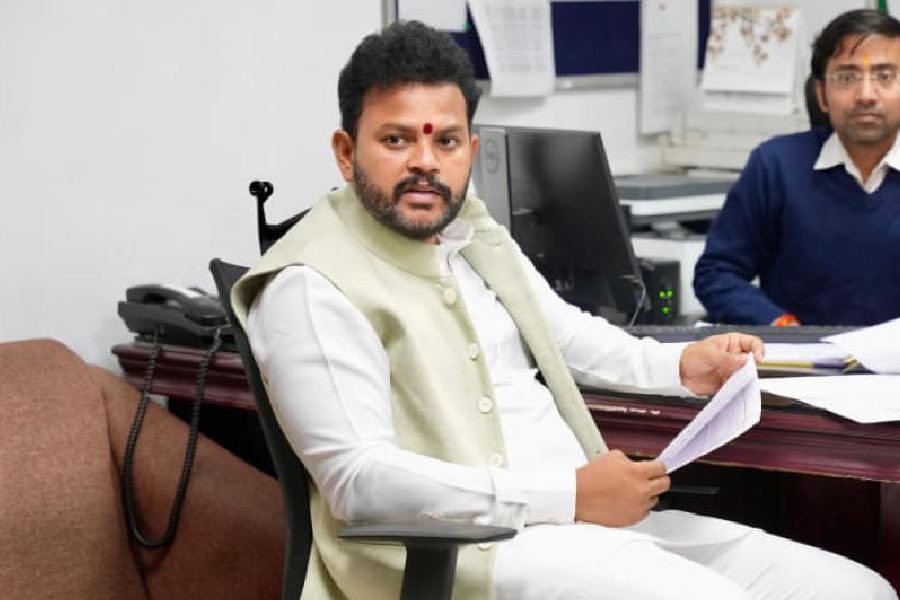Rather than the unadulterated fascism of the 1930s, what we have in our country is a camouflaged fascism within a democratic shell, closely linked to the advance of rampant neo-liberalism, eminent social scientist Prabhat Patnaik tells Subhoranjan Dasgupta, professor of human sciences.
Q: A sitting Chief Justice of the Supreme Court has accused the authorities of four grave misdeeds: indiscriminate arrests, prolonged incarceration, making prisoners wait indefinitely for bail or trial, and unlawful eviction. These are traits of a full-fledged fascist regime. Are we then proceeding towards a fascist State, or have we already arrived there?
Patnaik: What the Chief Justice pointed to are symptoms of authoritarianism, not fascism per se. Authoritarianism is certainly a central feature of fascism, but fascism is characterised, in addition, by at least three other central features: a close nexus between a section of monopoly capital and the fascist party; the build-up of hatred against a hapless minority group; and the use, apart from the state machinery of repression, of hoodlum elements to spread terror. All these are present in India today.
Today’s fascism, however, cannot be the same as the fascism of the 1930s. Indeed, I would call what we see in India and other parts of the world today, “neo-fascism”. The earlier fascism had destroyed a large part of the globe by unleashing a war; but in the process it had also destroyed itself. Neo-fascism in countries like India cannot follow a similar trajectory of war. And because it will not unleash an external war, it will also be a more durable phenomenon.
The fascist State it builds is not so much an open terrorist state but a camouflaged fascist dispensation. It is not a question, therefore, of the State moving to become a specific type of entity; rather, the open terrorist character of the State will reveal itself intermittently, depending on the circumstances, while it continues to remain a camouflaged fascist power.
Q: The democratic facade — Parliament, the state Assemblies and elections — is being scrupulously maintained. But the essence of democracy is being subverted, and repeated horse-trading has turned elections into a laughable process. Would you say the present dispensation is upholding the democratic structure but strangling democracy from within? And thereby giving fascism a new dimension?
Patnaik: You are right. What we have within the shell of an apparently democratic facade is the structure of a camouflaged fascist State. This, however, is the limit point of a trend that began much earlier. The nullification of democracy does not begin with the ascension of the fascist party to power; it begins with the adoption of a neo-liberal economic regime.
Under neo-liberalism you have a nation-state confronting globally mobile capital. The nation-state, therefore, willy-nilly has to obey the dictates of finance, for otherwise finance would move elsewhere en masse causing a financial crisis in the country, which the State can ill-afford. That is why all political parties follow similar economic policies, which is essentially a negation of democracy.
The sovereignty of the people demands that they should have a choice between parties professing different policies; and if they elect one to power then it must pursue the policies it had promised. But if all parties profess the same policies, or if promising a different policy, renege on that promise when elected in order to keep globalised finance happy, then the sovereignty of the people has given way to the sovereignty of globalised finance.
Such a substitution can be accepted by the people for some time because of the promise of “trickle down”: they may be persuaded for a while into believing that if finance is “confident” then a high growth rate will ensue, whose benefits would trickle down to them, so that the interests of finance are the same as their own interest.
This illusion, however, collapses when the neo-liberal economy runs into a crisis despite all blandishments to finance, as it has done now; and that is when neo-fascism plays the role of propping up neo-liberalism. A corporate-Hindutva alliance (in our context) comes into being, and changes the discourse from issues of material life to generating hatred against a minority. Terrorisation, both by the State and by Hindutva hoodlums, together with this discourse shift now sustain neo-liberalism.
Fascist ascendancy is thereby produced by an economic crisis of capitalism; what is new in the present context is that fascism exercises its power within the shell of a democratic structure without necessarily overthrowing that structure in toto.
Q: What is the single most unforgivable feature of this new “democratic fascism” — hypocrisy? You literally kiss the Constitution but indulge in the most unconstitutional violence against, and prosecution of, dissidents and minorities. Could you give a few more examples of this hypocrisy? Do you agree that this is a predominant trait of the present rulers?
Patnaik: It is certainly a trait of the present rule of neo-fascism. Obvious examples are: the way ruling party members openly laud Gandhiji’s assassins with impunity even as the government pays obeisance to him; the way atrocities against Dalits have increased on its watch, and job reservations for Dalits are being done away with through privatisation, despite the government’s professed concern for Dalits. Hypocrisy, however, is an essential feature of all fascism since it thrives on propaganda, or jumla, and this is especially so when fascism has to maintain a democratic shell.
Q: Another feature of this new kind of destructive politics is religiosity – the use of religion to divert people’s attention from the most critical problems. Do you think this explicit and pervasive show of religiosity is a typical Indian addition to the compendium of “democratic fascism”? Should we label the process as “religious fascism” as well?
Patnaik: I would draw a strict distinction between “religiosity” and “communalism”. One can be religious without necessarily entertaining any ill-will towards other religions, and such co-existence of religions has been a feature of Indian society for long. In fact, in traditional societies like ours, religiosity is the basis of moral behaviour, and hence plays a positive role.
But the political use of religiosity by giving it a certain specific meaning, the promotion of such a new type of manufactured religiosity as a means of generating animosity against the religion of the targeted hapless minority group, is what characterises Indian neo-fascism; I would call it “communalism”.
In other countries some other dividing line may be used by fascist movements but here in India it is communalism based on religious difference; this is why the term “communal fascism” has been used by Amartya Sen to describe the Indian phenomenon.










